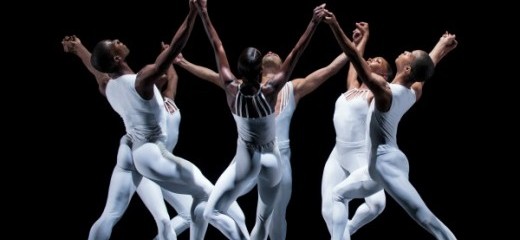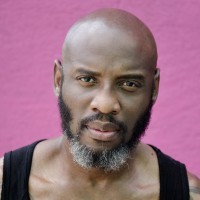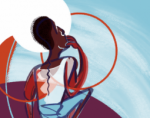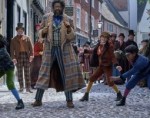
Dance Theatre of Harlem: Still a Beacon of Hope!
by Gregory King
When the professional company Dance Theatre of Harlem (DTH) went on hiatus in 2004, I thought of the possible void that would be left by the absence of an institution that broke barriers, making ballet accessible to many dancers of color. At a time when ballet conservatives perpetuated the belief that black bodies were not suited for classical ballet, co-founders Arthur Mitchell and Karel Shook created a space where non-white dancers could train and ultimately perform. A hiatus that was supposed to be one month lasted eight years.
With Virginia Johnson at the helm as new artistic director, the return of the company boasts younger dancers as Philadelphia welcomed them to the Annenberg Center’s “African Roots, African Voices Series.”
Darrell Grand Moultrie’s Vessel (2014) opened the show, and was a sophisticated blend of sharp percussive steps and leggy adagios. Moultrie played with contrasts making the ballet unpredictable and exciting to watch. A leggy Chyrstyn Fentroy and a sturdy Jorge Andrés Villarini gave a memorable performance in their duet Love, leaving the audience audibly gasping as he carried her offstage in an overhead lift. Moultrie wove a tapestry of movements that places him in good company with the likes of Kyle Abraham and Victor Quijada - choreographers who design intricate spatial patterns, creating indelible images that stay with you long after the curtains come down.
Dancer Nayara Lopes was perfectly precise in Christopher Huggins’ In The Mirror of Her Mind (premiered by DTH in 2013). As the central character, Lopes was a dynamic performer, interacting with her three male partners to create relationships that were not always easy to comprehend. At times the ballet was saturated with banal lifts and random jumps, but one moment that sparkled was when dancer Da’Von Doane sat in a second position grand plié before Lopes jumped on his thigh then cascaded into his arms.
Choreographed by Ulysses Dove for The Royal Swedish Ballet in 1993, Dancing on the Front Porch of Heaven: Ode to Love and Loss (DTH premier 2013), was an elegant display of contemporary meets classicism. With shaky execution, the youth of the company showed especially in the tentatively tactile male duet and the trio section of ladies bouréeing along the diagonal before performing grand rond de jambes. After seeing them in earlier in the evening, I knew the dancers were quite capable, but they didn’t manage to convey the risk and precision often associated with Dove’s choreography.
The voices of Aretha Franklin and James Brown in Robert Garland’s Return (1999) energized the audience, making it a crowd pleaser. The dancers grooved to the sound of the music, making sure to add an urban flair to each step …at least they tried to. Having performed three neo-classical ballets prior, Return felt like an attempt to prove to the viewers that in addition to fouetté turns, they could also get funky by performing the moonwalk, the cabbage patch, and the robot – still wearing pointe shoes. As a choreographer I felt as though Return missed some opportunities: maybe purging the point shoes and putting some “stink” into every hip sway by adding some weight to their swag? I’m a firm believer in the power of costumes to enhance or detract from a piece, and in this case, the mini-skirt dresses were reminiscent of a figure skater’s get-up and did very little to support the jazzy street aesthetics of the choreography.
There is no doubt in my mind that Dance Theatre of Harlem is back. After hearing a little girl behind me say to her mother, “That’s a black ballerina,” I realize that they’re not just back, but they continue to inspire generations, by giving little black boys and little girls something to believe in.
By Gregory King
March 9, 2016








